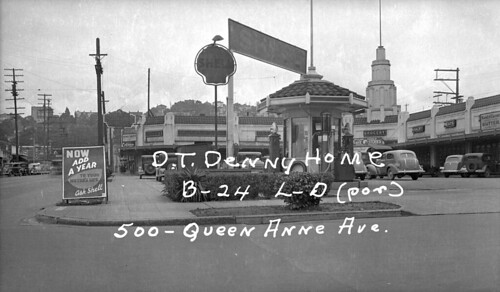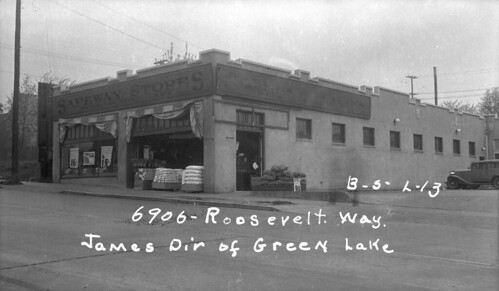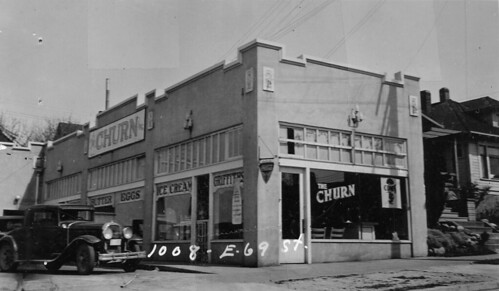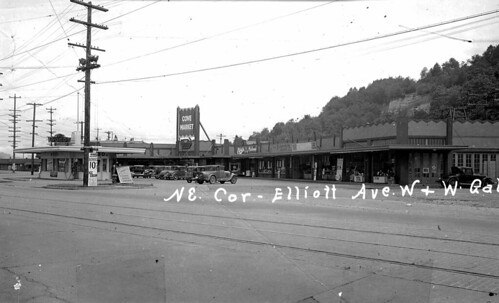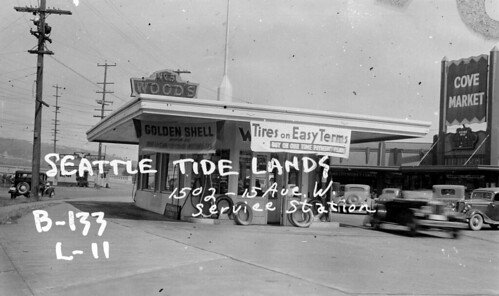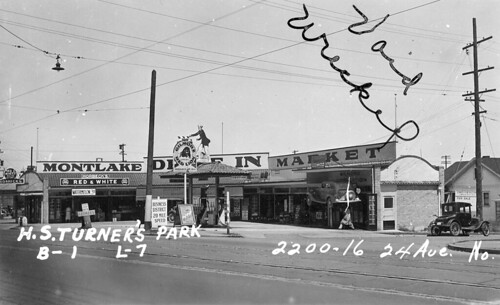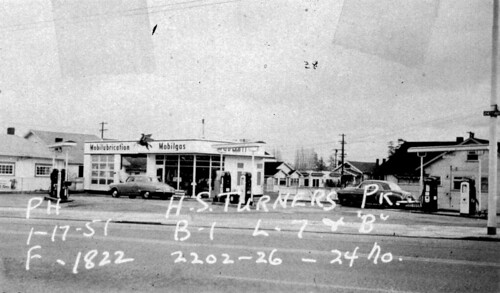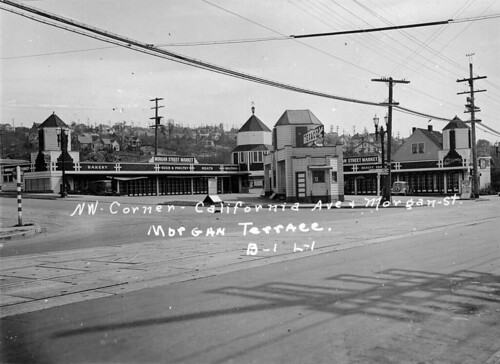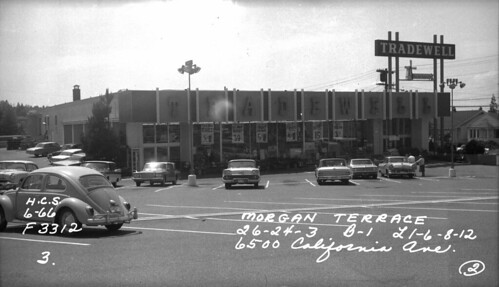Last month I finished an article describing the handful of Seattle’s drive-in markets. They may have been Seattle’s first buildings designed to engage automobiles — other than garages, the first car architecture. Here’s how I described them:
Part super service station and part public market, drive-in markets were the first building type to interface with off-street parking in the way of a strip mall. They also resembled strip malls because of their lack of chain identity, and due to the number of independent vendors that leased space. But they were public markets, so sellers each represented one of the business types we are used to seeing at the Pike Place Market: meat, dairy, fruits, vegetables, seafood, groceries, baked goods and other food items. They were all in an open space with vendors shoulder to shoulder.
I hoped to get my hands on clear photos of the buildings themselves. And my hopes were fulfilled! Click through each of these images to find the full-sized scan that I purchased from the Washington State Archives.
Car architecture: Uptown’s Motor-In Market
Roosevelt Safeway (formerly Pay’n’Takit)
Interbay’s Cove Mid-City Market
Montlake Drive-In Market
Morgan Street Drive-In Market
Each of these markets is fully described in my Seattle drive-in markets article.
I need to again thank Professor Richard Longstreth for his fantastic book “The Drive-In, the Supermarket, and the Transformation of Commercial Space in Los Angeles, 1914-1941“.
More groceries
I gave a talk on the Morgan Street Drive-In Market on March 20, 2016 at the High Point library for the Southwest Historical Society. You can watch it here.
I’ve been writing a surprising amount over the last couple of years about Seattle’s early 1900s groceries. Here’s a list of links:
- 50s Futurism Forgotten – The Burien Tradewell Story
- Seattle’s Drive-In Markets
- Seattle’s earliest car architecture in pictures – Drive-in markets
- Ice cream, beer, and the Montlake Drive-in Public Market (on CHS blog)
- Broadway Market v1.0 (on CHS blog)
- Blueprints of Broadway Market
- Groceteria
- (Witness Weeps) – The Tragedy of Alvin Monson
- Augustine & Kyer
- Charles Louch Farm
- Piggly Wiggly Seattle
- Anderson, United and Mutual Markets
- Eba’s Cut Rate Markets
- Main Arcade Eba’s Store No 1
- Corner Market Eba’s Store No 2
- Wallingford Eba’s Store No 7
- Buy your rubber at City Market (on CHS blog)
- Capitol Hill – fancy groceries since 1923 (on CHS blog)
- A Broadway clock that tells history not time – Queen City Grocery and IGA (on CHS blog)
- Piggly Wiggly on Broadway (on CHS blog)
- A shop on 11th Ave – Salle Brothers and Arai Grocery (on CHS blog)

